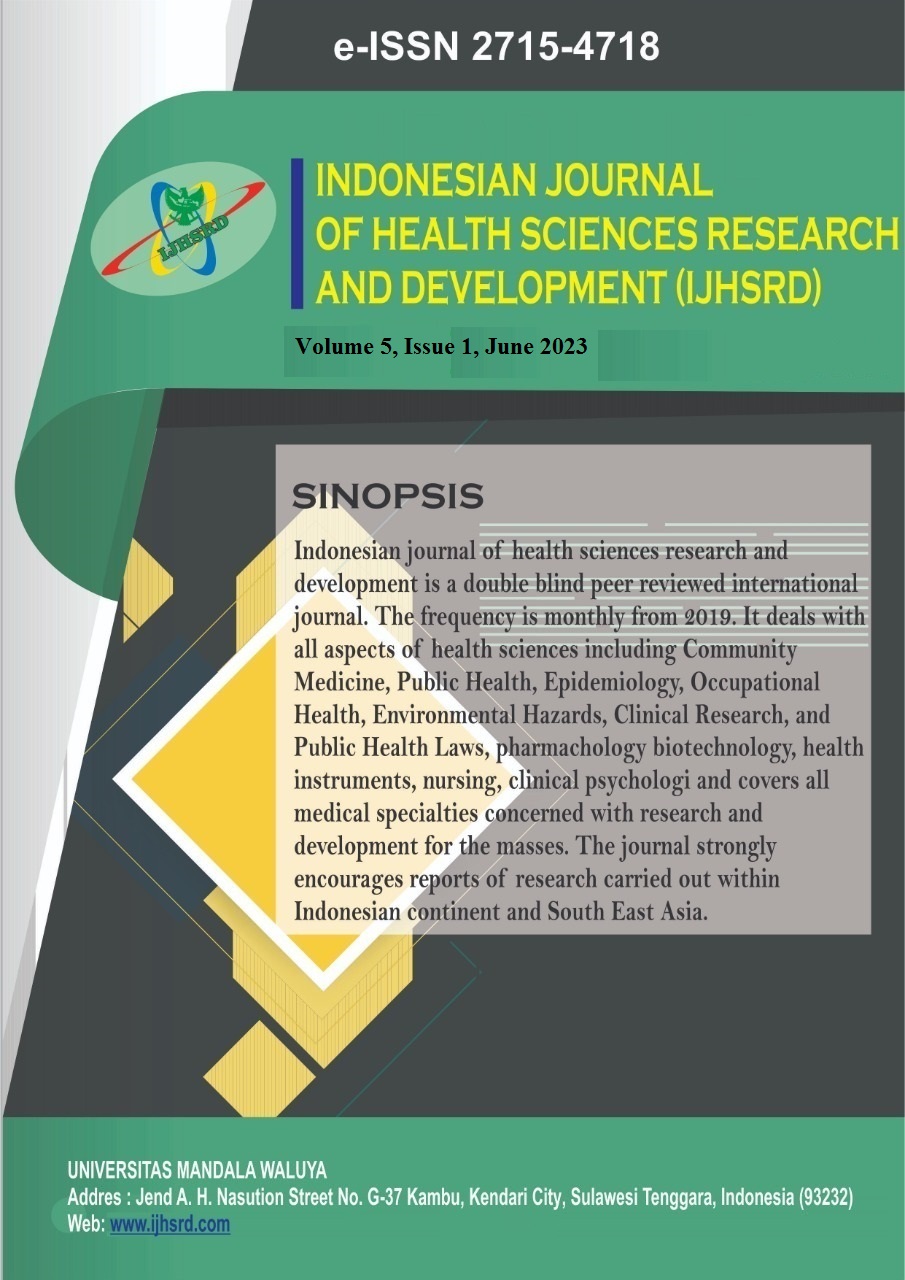Main Article Content
Abstract
Background : Excessive workload, stress, and, genetic disorders are the main reason for the increasing prevalence of Type II diabetes in India. Teneligliptin, is a potent Dipeptidyl peptidase (DPP-4) inhibitor that exerts its action in Type II diabetes mellitus. Teneligliptin mainly acts by increasing insulin levels and decreasing glucagon levels in the circulation in a glucose-dependent manner. It offers sufficient glycemic control in a period of 12 weeks ad is also tolerable by renal-impaired patients.
Methods: Six formulations of teneligliptin tablets were prepared by using different ratios of MCC, maize starch, HPMC, HPC, aerosol, and magnesium stearate. The prepared tablets were evaluated in terms of friability, hardness, disintegration, and dissolution rate profile
Results: Out of all six formulations, F4 reflects better tablet characteristics as compared to the rest five formulations
Conclusions: F4 turns out to be the best formulation of the present study and can be used for commercial production.
Keywords
Article Details

This work is licensed under a Creative Commons Attribution-ShareAlike 4.0 International License.
References
- Tripathi KD. Essentials of medical pharmacology. JP Medical Ltd; 2013
- Alam U, Asghar O, Azmi S, Malik RA. General aspects of diabetes mellitus. Handbook of clinical neurology. 2014 Jan 1;126:211-22. Doi: https://doi.org/10.1016/B978-0-444-53480-4.00015-1
- Kaul K, Tarr JM, Ahmad SI, Kohner EM, Chibber R. Introduction to diabetes mellitus. Diabetes: an old disease, a new insight. 2013:1-1. Doi: https://doi.org/10.1007/978-1-4614-5441-0_1
- Olokoba AB, Obateru OA, Olokoba LB. Type 2 diabetes mellitus: a review of current trends. Oman medical journal. 2012 Jul;27(4):269. Doi: 10.5001/omj.2012.68
- Ozougwu JC, Obimba KC, Belonwu CD, Unakalamba CB. The pathogenesis and pathophysiology of type 1 and type 2 diabetes mellitus. J Physiol Pathophysiol. 2013 Sep 30;4(4):46-57. Doi: 10.5897/JPAP2013.0001
- Atlas D. International diabetes federation. IDF Diabetes Atlas, 7th edn. Brussels, Belgium: International Diabetes Federation. 2015;33:2.
- DeFronzo RA, Ferrannini E, Groop L, Henry RR, Herman WH, Holst JJ, Hu FB, Kahn CR, Raz I, Shulman GI, Simonson DC. Type 2 diabetes mellitus. Nature reviews Disease primers. 2015 Jul 23; 1(1):1-22. Doi: https://doi.org/10.1038/nrdp.2015.19
- Galicia-Garcia U, Benito-Vicente A, Jebari S, Larrea-Sebal A, Siddiqi H, Uribe KB, Ostolaza H, Martín C. Pathophysiology of type 2 diabetes mellitus. International journal of molecular sciences. 2020 Jan;21(17):6275. Doi: https://doi.org/10.3390/ijms21176275
- Kishimoto M. Teneligliptin: a DPP-4 inhibitor for the treatment of type 2 diabetes. Diabetes, metabolic syndrome and obesity: targets and therapy. 2013 May 6:187-95.
- Sharma SK, Panneerselvam A, Singh KP, Parmar G, Gadge P, Swami OC. Teneligliptin in management of type 2 diabetes mellitus. Diabetes, metabolic syndrome and obesity: targets and therapy. 2016 Aug 16:251-60
- Maladkar M, Sankar S, Kamat K. Teneligliptin: heralding change in type 2 diabetes. Journal of Diabetes mellitus. 2016;6(02):113.Doi: 10.4236/jdm.2016.62012
- Lachman L, Liberman HA, Kanig JL, Textbook of The theory and practice of industrial pharmacy Lea & Febiger, Philadelphia;1989
- Agrawal R, Naveen Y. Pharmaceutical processing–A review on wet granulation technology. Int J Pharm frontier res. 2011 Apr;1(1):65-83.
- Kristensen HG, Schaefer T. Granulation: a review on pharmaceutical wet-granulation. Drug development and industrial pharmacy. 1987 Jan 1;13(4-5):803-72. Doi: https://doi.org/10.3109/03639048709105217
- Thapa P, Tripathi J, Jeong SH. Recent trends and future perspective of pharmaceutical wet granulation for better process understanding and product development. Powder Technology. 2019 Feb 15;344:864-82. Doi: https://doi.org/10.1016/j.powtec.2018.12.080
- Tiwari P. Formulation and Evaluation of SR Tablets of Anti-diabetic drug Gliclazide. Hemke AT, Ghuge YG, Gupta KR. Application of RP-HPLC and UV-Spectrophotometric Method in Dissolution Testing of Teneligliptin. Der Pharma Chemica. 2018;10(1):103-.10
- Gopinath R, Naidu RA. Pharmaceutical preformulation studies–current review. International Journal of Pharmaceutical and Biological Archives. 2011;2(5):1391-400.
- Parashar B, Chauhan A, Prashar D, Chandel A, Kumar H, Purohit R. Formulation and evaluation aspects of tablets-An overview. Am J PharmTech Res. 2012;2:2249-3387
- Chaurasia G. A review on pharmaceutical preformulation studies in formulation and development of new drug molecules. Int J Pharm Sci Res. 2016 Jun 1;7(6):2313-20.
- Nyol S, Gupta MM. Immediate drug release dosage form: a review. Journal of Drug Delivery and Therapeutics. 2013 Mar 15;3(2).
- Chaturvedi H, Garg A, Rathore US. Post-compression evaluation parameters for tablets-an overview. Eur J Pharm Med Res [Internet]. 2017;4(11):526-30.
- Jain S.K & Soni V. “Bentley; Textbook of Pharmaceutics” Published by Elsevier India Private Limited, 309
- Kushwaha. P “Hand book of Pharmaceutical Technology” Ist Edition 2015, Published by Jaypee Publication.
- Javed Ali, A Ahuja and R.K Khar, Text book of Dosage Form Design, Birla publication Pvt. Ltd. New Delhi, India, 2006; P01-31.
- Tiwari P. Formulation and Evaluation of SR Tablets of Anti-diabetic drug Gliclazide.
- Godge GR. Formulation development and in-vitro evaluation of sustained release tablets of telmisartan by solid dispersion technology. Asian J of PharmTech & Inn. 2016; 4:17.
- Amit MS, Kiran KD, Varsha AR. A simple UV spectrophotometric method development and validation of Teneligliptin in tablet dosage form. Indo Am J Pharm Res. 2016;6(04):14-21.
- Azarmi S, Roa W, Löbenberg R. Current perspectives in dissolution testing of conventional and novel dosage forms. International Journal of pharmaceutics. 2007 Jan 2; 328(1):12-21. Doi: https://doi.org/10.1016/j.ijpharm.2006.10.001
- Silva DA, Webster GK, Bou-Chacra N, Löbenberg R. The significance of disintegration testing in pharmaceutical development. Dissolution Technol. 2018 Aug 1; 25(3):30-8. Doi: dx.doi.org/10.14227/DT250318P30
- Markl D, Zeitler JA. A review of disintegration mechanisms and measurement techniques. Pharmaceutical research. 2017 May;34(5):890-917. Doi: https://doi.org/10.1007/s11095-017-2129-z
